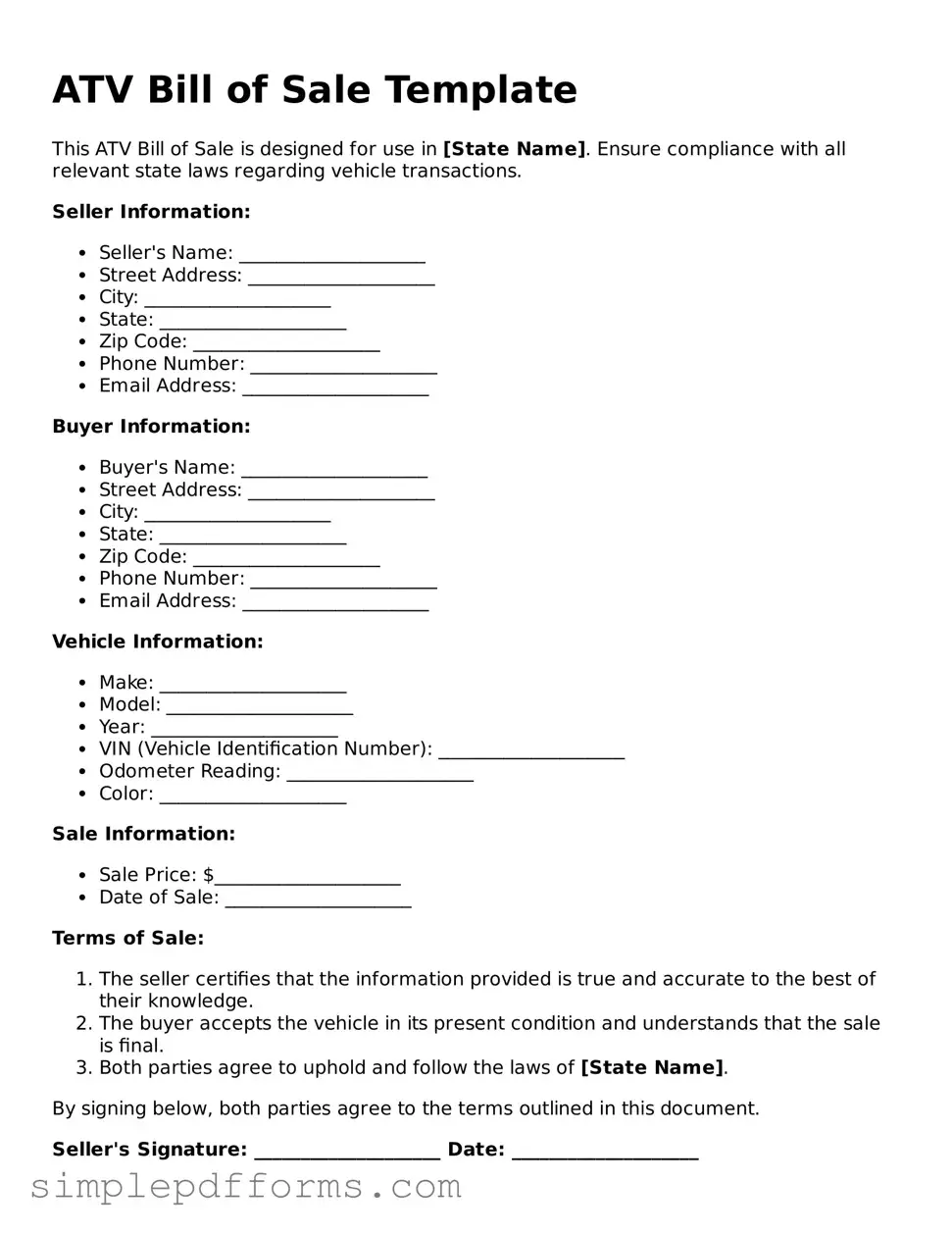When completing an ATV Bill of Sale form, many individuals overlook important details that can lead to complications. One common mistake is failing to provide accurate information about the vehicle. This includes the make, model, year, and Vehicle Identification Number (VIN). If any of this information is incorrect or missing, it can create issues during the registration process.
Another frequent error involves the seller’s and buyer’s information. People often neglect to include full names, addresses, and contact details. Incomplete information can hinder communication between the parties and may complicate future transactions or disputes.
Additionally, some individuals forget to include the sale price of the ATV. This amount is crucial for both parties, as it establishes the financial terms of the sale. Omitting this detail can lead to misunderstandings regarding payment and ownership transfer.
People also tend to overlook the date of the sale. This date is important for record-keeping and may affect warranties or other legal considerations. Without a clear date, it may be difficult to establish when the ownership officially changed hands.
Not having the form signed by both parties is another common mistake. Signatures serve as proof that both the seller and buyer agree to the terms outlined in the document. Without these signatures, the validity of the sale may be questioned.
Some individuals fail to provide a witness signature, if required by state law. Certain jurisdictions mandate that a Bill of Sale includes a witness to validate the transaction. Ignoring this requirement can lead to legal complications later on.
People sometimes neglect to check for any outstanding liens on the ATV. If the vehicle has a lien, the seller must disclose this information. Not doing so can result in legal issues for the buyer, who may unknowingly purchase a vehicle that is not fully owned by the seller.
Another mistake involves not keeping a copy of the completed Bill of Sale. This document serves as a record of the transaction for both parties. Failing to retain a copy can lead to disputes or confusion in the future.
Lastly, individuals may not familiarize themselves with their state’s specific requirements for an ATV Bill of Sale. Each state has its own regulations, and not adhering to these can invalidate the document. It is essential to research and understand local laws to ensure compliance.
